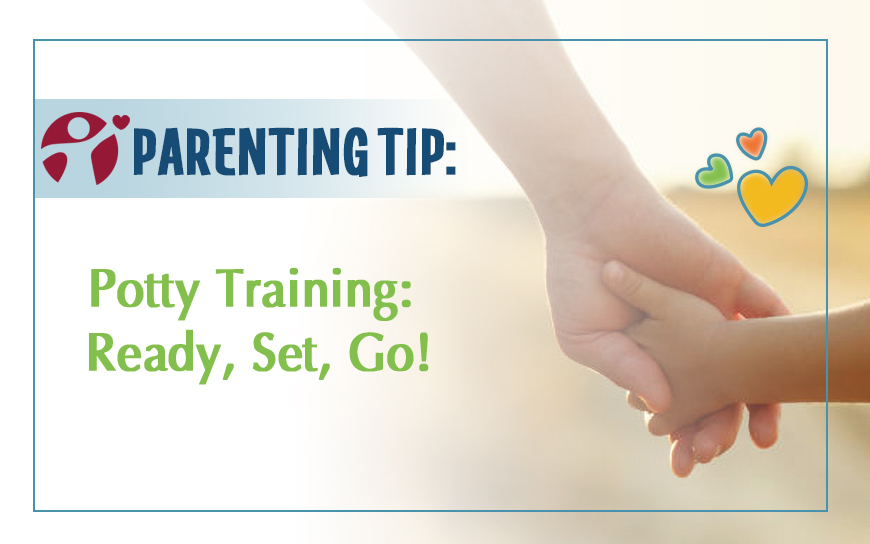We realize that the idea of starting to potty train your child can be a daunting one, but we are here to help. Below is some information to you help you determine if your child is ready to begin potty training, and it they are, how you can prepare for this and make it a positive experience for both you and your child.
Ready
15 Signs of Readiness (your child may show 4 or 5 signs).
- Has regular bowel movements
- Can stay dry for a few hours or wakes up dry from sleep
- Knows that he/she has to go to the bathroom
- Understands the association between dry pants and using the potty
- Can pull his/her pants up and down
- Lets you know when he/she has soiled his/her diaper
- Can follow simple directions like “Let’s go to the potty”
- Understands potty terms (wet, dry, pee, poop, dirty, and potty)
- Can tell you when he/she has to go to the bathroom
- Imitates family members
- Shows interest and asks questions while watching you
- Wants to do things “by myself”
- Enjoys washing his/her hands
- Gets upset if his/her belongings are not in their proper place
- Is 18 months of age or older (not recommended to start before this age)
Set
Ways to Prepare for the Big Day
- Dress your child in clothes that are easy to take on and off (avoid) snapping shirts)
- Discuss using the toilet with your child
- Shop for new underwear with your child (It is not recommended that you let your child wear the underwear prior to beginning training or over their diapers)
- “Show” your child how to use the bathroom (siblings and adults can help with this)
- Use a gender appropriate model
- Have a large supply of clothes easily available (underwear pants, shirts, socks, etc.)
- Have plenty of clean supplies (wipes and plastic bags)
- Create an inviting environment in the bathroom (step stool, books, decorations, etc.)
- Individual potty chairs can be used at home but we ask that you don’t bring them to our centers
Go
Things to Remember Along the Way
- Set up a schedule
- Encourage your child to “sit” on the potty, but never force them to sit
- Don’t have them sit until they produce (be patient and encourage them to try later)
- Don’t expect instant success
- Adjust the schedule according to your child’s progress
- Give positive reinforcement for using the potty (hugs, kisses, clapping, and praises)
- Avoid food or bribes as reinforcements for going potty
- Make a chart for your child to see his/her progress
- Avoid going back and forth between diapers and underwear (try cotton training underwear
- Work cooperatively with your child’s early education teachers to ensure consistency between home and school (share your child’s schedule and progress as often as needed)
- Remain calm, positive, and supportive at all times
- Have your child wash his/her hands after using the bathroom
Books to Read to Your Children About Potty Training:
One Upon a Potty – Boy by Alona Frankel
Once Upon a Potty – Girl by Alona Frankel
Pottysaurus – Children’s Padded Board Book by Little Hippo Books
Daniel Tiger’s Potty Time! Children’s Toilet Training Sound Board Book for Daniel Tiger Fans by Scarlett Wing
Potty Board Book by Leslie Patricelli
Let’s Go to the Potty!: A Potty Training Book for Toddlers by Allison Jandu
Additional Online Parent Resources:
https://www.zerotothree.org/resource/potty-training-learning-to-the-use-the-toilet
https://www.babycenter.com/toddler/potty-training/potty-training-what-works_4397
https://www.pampers.com/en-us/toddler/potty-training/article/when-to-start-potty-training-signs-your-child-is-ready
https://www.ncbi.nlm.nih.gov/pmc/articles/PMC2819951
https://montessoriguide.org/toilet-training-versus-toilet-learning
https://kidshealth.org/en/parents/toilet-teaching.html

